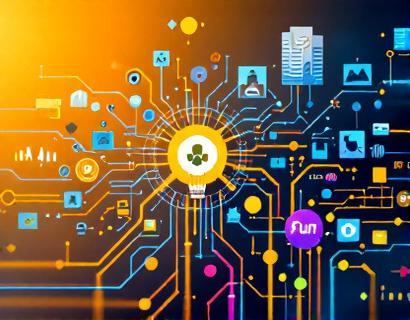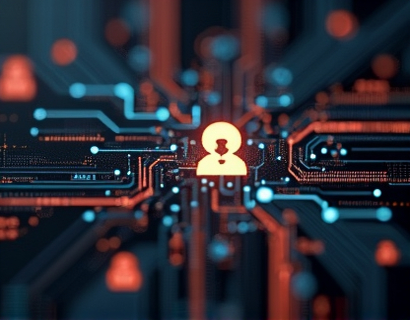Transforming Education with AI-Powered Chatbots: A Comprehensive Guide for Students, Families, and Educators
The integration of artificial intelligence in educational settings has opened new avenues for learning, making information more accessible and personalized than ever before. Among the various tools emerging in this space, AI-powered educational chatbots stand out for their ability to provide specialized insights tailored to the needs of students, families, and educators. This article delves into the multifaceted benefits of these chatbots, focusing on how they enhance the educational experience through industry knowledge and services, while ensuring a safe and engaging environment for all users.
Understanding AI-Powered Educational Chatbots
AI-powered educational chatbots are sophisticated tools designed to interact with users through natural language processing. These chatbots leverage machine learning algorithms to understand and respond to queries with precision and relevance. Unlike traditional Q&A systems, these chatbots can engage in multi-turn conversations, providing step-by-step explanations and detailed insights. This capability makes them invaluable resources for educational institutions and families seeking reliable and comprehensive information.
Specialized Insights for Students
For students, AI chatbots serve as personalized tutors, offering support in various subjects and topics. These chatbots can provide explanations of complex concepts, solve problems, and even offer study tips tailored to the student's learning style. One of the key advantages is the ability to receive immediate feedback, which is crucial for reinforcing learning and addressing misunderstandings promptly. Moreover, chatbots can adapt to the student's progress, offering more challenging material as the student becomes more proficient.
Specialized insights are a cornerstone of these chatbots. For instance, in science subjects, a chatbot can explain the principles of physics or chemistry, provide historical context of scientific discoveries, and even simulate experiments. In humanities, chatbots can delve into literary analysis, historical events, and cultural studies, offering a depth of knowledge that goes beyond standard textbooks. This level of detail and personalization helps students develop a deeper understanding and a more profound interest in their studies.
Support for Families
Families play a crucial role in a child's education, and AI chatbots can significantly enhance parental involvement. These chatbots can provide parents with updates on their child's progress, recommend educational resources, and offer tips on how to support learning at home. For example, a chatbot can suggest age-appropriate books, educational games, and online courses that align with the child's interests and learning needs. This continuous communication helps parents stay informed and engaged, fostering a supportive learning environment.
Moreover, chatbots can assist families in navigating the educational system. They can answer questions about school policies, enrollment processes, and available programs. This accessibility ensures that parents have the information they need to make informed decisions, ultimately contributing to the child's educational success.
Resources for Educators
Educators are another critical user group for AI chatbots. These tools can serve as valuable assistants, helping teachers manage their workload and enhance their teaching methods. Chatbots can provide lesson plan ideas, suggest interactive activities, and offer strategies for managing classroom dynamics. For instance, a chatbot might recommend a project-based learning activity that aligns with the curriculum and engages students in practical applications of the subject matter.
Additionally, chatbots can facilitate professional development for teachers. They can provide access to the latest educational research, teaching methodologies, and industry trends. This continuous learning opportunity helps educators stay updated and improve their teaching practices, ultimately benefiting their students.
Ensuring Content Verification and Safety
One of the most significant advantages of AI-powered educational chatbots is their commitment to content verification. In an era where misinformation can spread rapidly, ensuring the accuracy of information is paramount. These chatbots are designed to cross-reference data from credible sources, providing users with verified and reliable content. This feature is particularly important for students and educators who rely on the chatbot for accurate information.
Safety is another critical aspect. Chatbots designed for educational use incorporate strict safety measures to protect users, especially children. This includes filtering out inappropriate content, monitoring interactions, and ensuring that all responses are child-friendly. Parents and educators can have peace of mind knowing that their children are engaging with a safe and controlled environment.
Child-Friendly Versions
Recognizing the unique needs of younger users, many AI educational chatbots offer child-friendly versions. These versions are designed with a focus on usability and safety, featuring simple language, engaging visuals, and age-appropriate content. For example, a child-friendly chatbot might use interactive stories and games to teach basic math concepts or introduce new vocabulary. These elements make learning fun and accessible, encouraging children to explore and learn without feeling overwhelmed.
Moreover, child-friendly chatbots often include parental controls, allowing parents to monitor and manage their child's interactions. This level of oversight ensures that children remain safe while benefiting from the educational resources provided by the chatbot.
Enhancing Learning in Educational Institutions
Educational institutions can integrate AI chatbots into their curriculum and support systems to create a more dynamic and effective learning environment. These chatbots can serve as virtual assistants for students, providing immediate assistance and resources. For example, a student struggling with a math problem can chat with the bot to get step-by-step guidance, reducing the burden on teachers and allowing for more personalized attention.
Schools and universities can also use chatbots to streamline administrative tasks. Chatbots can handle inquiries about schedules, course registrations, and campus resources, freeing up staff to focus on more critical tasks. This efficiency not only improves the student experience but also enhances the overall operational effectiveness of the institution.
Building a Secure and Engaging Environment
The integration of AI chatbots in education is not just about providing information; it's about creating a secure and engaging learning environment. By ensuring content verification and maintaining strict safety protocols, these chatbots foster trust among users. This trust is essential for encouraging active participation and maximizing the educational benefits.
Engagement is another key factor. AI chatbots can make learning more interactive and enjoyable through personalized conversations, quizzes, and gamified learning experiences. This approach caters to different learning styles and keeps students motivated. For instance, a history chatbot might present a virtual tour of ancient civilizations, complete with interactive maps and timelines, making the subject come alive for students.
Conclusion
AI-powered educational chatbots represent a significant advancement in the way we approach learning. By providing specialized insights, ensuring content verification, and offering child-friendly versions, these chatbots enhance the educational experience for students, families, and educators. They create a secure and engaging environment that supports continuous learning and personal growth. As technology continues to evolve, the potential for AI chatbots in education is vast, promising a future where learning is more accessible, personalized, and effective than ever before.











































